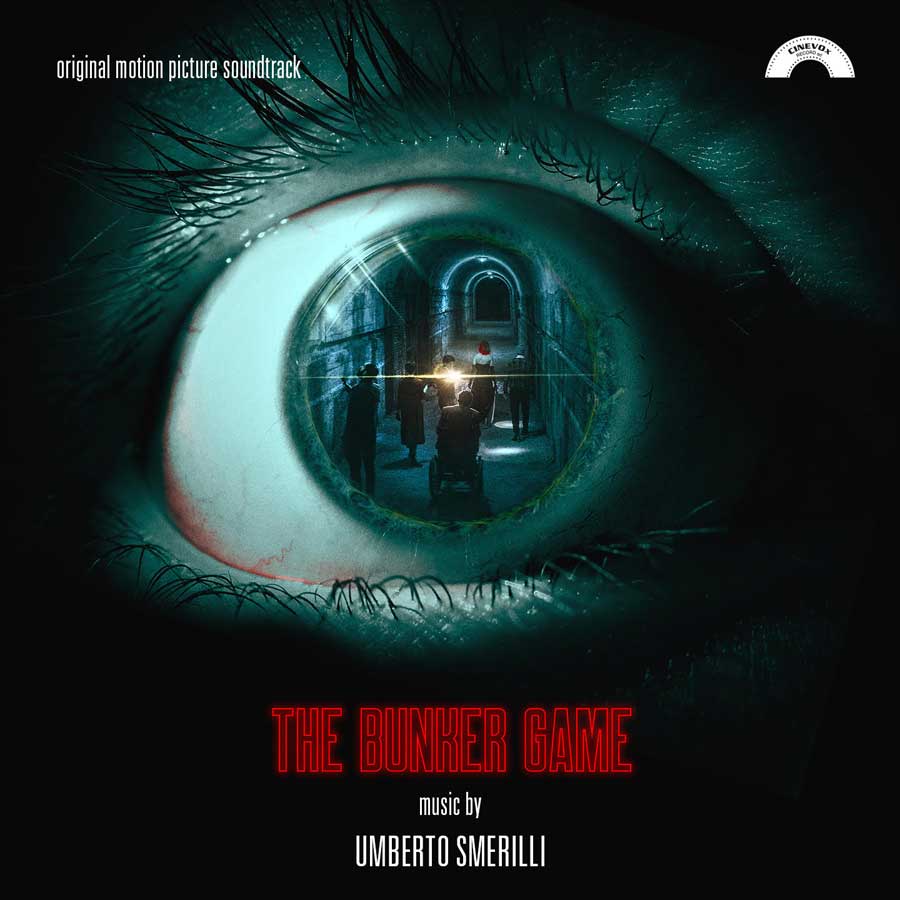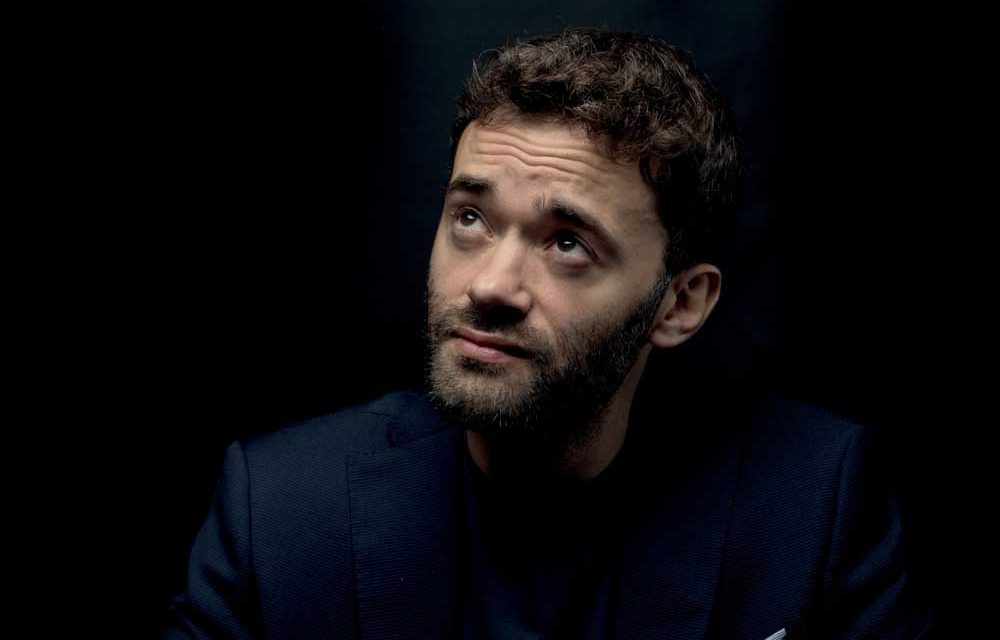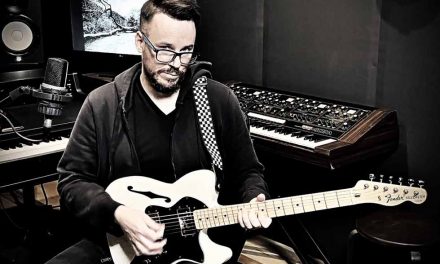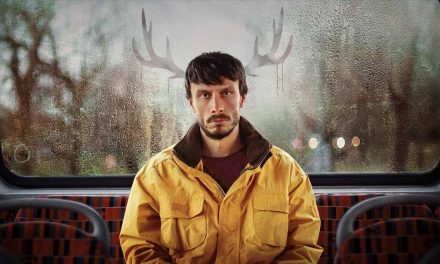Heaven of Horror spoke exclusively with Umberto Smerilli about the score for Shudder’s new film, The Bunker Game.
Umberto’s score is also available here >
What attracted you to The Bunker Game script?
I was attracted to the script because it has an intriguing mixture of fiction and reality. We start with a live role-playing game taking place in the bunker, meaning the players are acting like the character they were given, Chinese box structure. Then the situation suddenly changes and nothing is what it appears. This swinging back and forth between different levels is disorienting and charming at the same time.
How did you first decide on what the tone of the score was going to be? What did that process look like?
The director had a very clear vision of what he wanted the musical tone to be, so that was a good starting point. We both referenced Hereditary by Ari Aster and The Witch by Robert Eggers. Composers Colin Stetson and Mark Korven did a great job on these movies. We wanted a similar feel.
When I was mapping out the score, I felt that the bunker should be treated like another main character, which led me to search for the right timbre to depict the dark wet tunnels made of hard unempathetic concrete and rusty metals. I searched for sounds that could express these concepts, darkness, inhospitality, but also deep resonating mazes like the guts of a mountain.
Finally, we added some drama to it. We pointed toward the tradition of Italian Opera, trying to give an operatic breath to the main scenes, which I was inspired by Puccini.

Did you give each of the main characters specific themes? If so, can you talk about what those sounded like?
Most of the themes in the movie are linked to specific situations or crucial points during the narration, like the Desire theme for example. This track appears each time Laura and Greg meet alone, so it’s more about their cursed, inevitable passion than about the characters. I really like this theme because it has a vintage vibe inspired by Bernard Herrmann. It also points in the direction of ambiguity between the reality of the game and fiction as I mentioned before. I would say this music is kind of like a costume.
In the first part of the movie, the music is more related to the dystopia staged during the game. So the music alludes to the cinema of the 50s accordingly.
Other tracks, like Haunted Tunnels, are linked to the bunker and work as a sort of extension for the scenography into the realm of sound.
There are also other tracks that are specifically attached to a character, like Clara’s theme. This is the operatic tune written to gaze into the deep drama lived by Clara, a ghost tortured by a mournful loss.
In general, my approach is to search for concepts and ideas that are implied or hidden in the story and dig them out. This sometimes leads to emphasizing a character’s trait, or other times staying on an abstract concept or situation. I really love to work with leitmotifs whenever possible. In this movie we have six, can you spot them all?
Did you score the film in chronological order? Or did you score the most intense scenes last after you were already fully encompassed in the scoring process?
The first step was to find the concepts I wanted to point out. Consequently, the main scenes come first with this approach. We also decided that we wanted to start scoring the second half of the movie and then move backwards to the beginning. We wanted to find the right temperature of the core first. We also knew that the first and the second part should be different. So it wasn’t a problem jumping around.
There is a remix on the album with Bewider. How did this come about?
I had an amazing music producer for this score, Piernicola di Muro aka Bewider. He really dove into my music and understood what the features were and how to make them explode into something unique. So at the end of the process, I felt it only natural to ask him if he would like to take the main themes and come up with something original, in his own style.
Was there a scene in the film that you kept getting stuck on, musically? Why were you challenged with it?
The scene in which Clara sings Parlami d’Amore Mariù acapella was really hard. If you watch it, you may find nothing special in that. But here we are in the elusive, subliminal field soundtracks sometimes can become.
The fact is that at a certain point the music starts to accompany her following the time of the performance of the actress on set. This was not an easy task. But the harmony completely changes the meaning of this love song, making it match the atmosphere of the movie. I wanted to merge this Italian song of the 20s with Clara’s theme to suggest there is a connection between the two pieces of music. As if one music possessed the other like ghosts do… This was really tricky.
The track, Back to the Bunker, has a pretty intense beat to it. Why did you decide to give this track a more electronic vibe?
This track appears at a turning point in the movie when Laura and her friends go back into the bunker after a blackout. The horror story begins at that moment, so I decided to push for some energy in it.
There is a reoccurring violin-type sound in a lot of the tracks, what instrument was used for this?
I’m glad you brought this up, this was an experiment I really enjoyed. I used a string orchestra, but I often mixed that with synths and virtual instruments, also asking the musicians to mimic the electronics. The result is a hybrid sound that is quite difficult to identify as acoustic or electronic. In this score, the orchestra mimics the electronics, while the sound design mimics the strings…
Horror film scores tend to be more experimental, did you find yourself trying new things on this movie because it was in the horror world?
Yes, definitely! I really tried to push the limits with The Bunker Game score.
The score is full of many kinds of bowed metal, ranging from big bronze plates to Tibetan bells and many more. But my best achievement in the field of unconventional instruments was inventing and building the Smerillophone. A wind instrument, which is essentially a plastic tube connected to a saxophone mouthpiece. It’s nothing particularly new but, given that I used to be a free jazz sax player, I have a wide toolbox of unconventional techniques to be applied on this instrument borrowed from the sax.
The Smerillophone was an amazing tool to depict the dark resonating tunnels of the bunker. The peculiarity of this score is the wide range of sound sources that blends into something cohesive. I allowed myself to do any kind of mixture in search of unique timbres and uncanny solutions. It was a lot of fun!
You can learn more about Umberto Smerilli here >
- Horror on Netflix in August 2024 - July 26, 2024
- Electrophilia – Review | Fantasia (2/5) - July 25, 2024
- The Beast Within – Review | Fantasia (3/5) - July 23, 2024


![Dark Season 2 Ending Explained [Netflix]](https://www.heavenofhorror.com/wp-content/uploads/2019/07/dark-season-2-explained-440x264.jpg)


